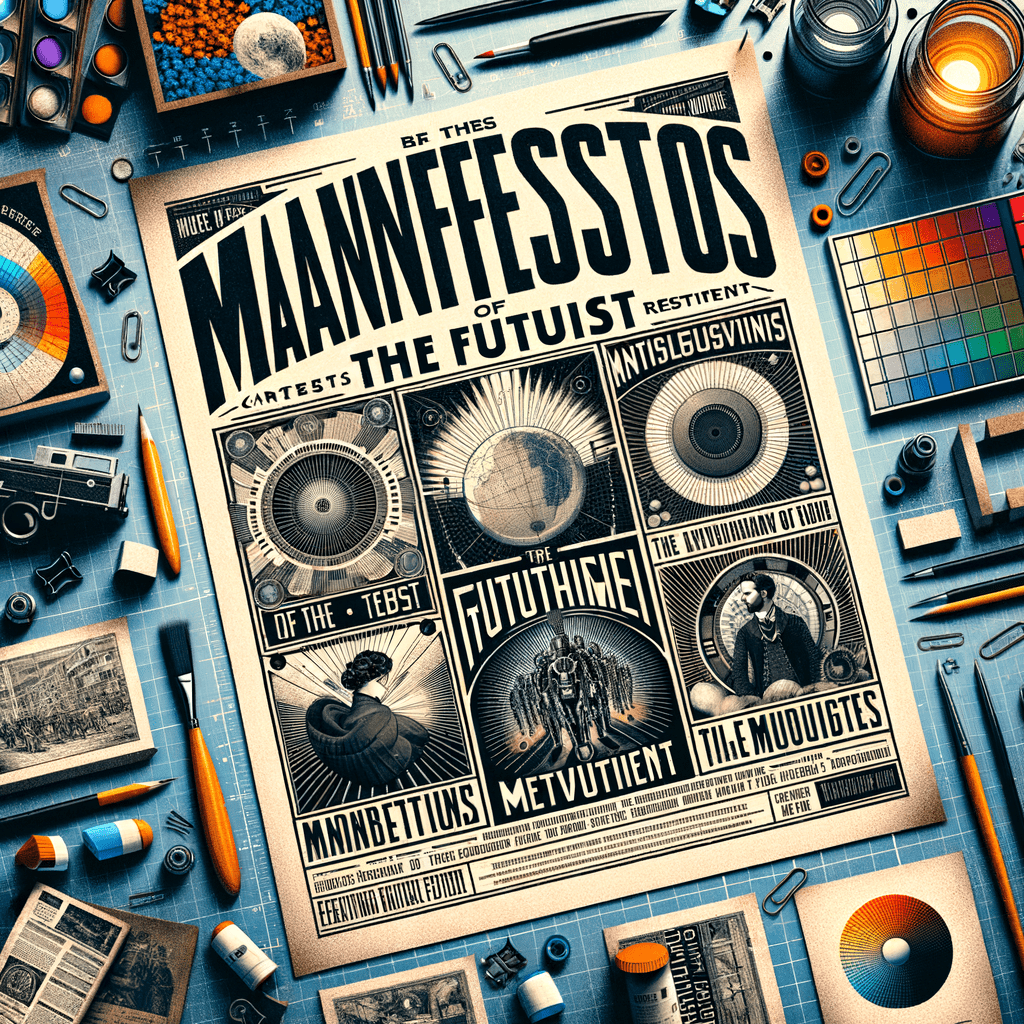Discover the key documents that defined the ambitions and revolutionary ideas of the Futurist movement.
Futurism was one of the most revolutionary artistic movements of the 20th century. Born in Italy at the beginning of the 1900s, it sought to break away from the past and embrace modernity, speed, and technology. The futurist manifestos were key documents that defined the ambitions and ideas of the movement. In this article, we will explore the five most influential manifestos that shook the art world.
1. The Futurist Manifesto (1909)
The first and most famous futurist manifesto was published on February 20, 1909, in the French newspaper “Le Figaro.” Written by Filippo Tommaso Marinetti, this manifesto laid the groundwork for the futurist movement.
Main points of the manifesto:
- Exaltation of speed, technology, and modernity.
- Rejection of the past and traditions.
- Glorification of war as the “hygiene of the world”.
- Disdain for women and feminism.
This manifesto had an immediate impact and drew the attention of artists and intellectuals across Europe. It also sparked much controversy due to its radical and provocative ideas.
2. The Manifesto of the Futurist Painters (1910)
Published on February 11, 1910, this manifesto was signed by Umberto Boccioni, Carlo Carrà, Luigi Russolo, Giacomo Balla, and Gino Severini. It outlined the ideas of the Futurist painters and their approach to visual art.
Main Points of the Manifesto:
- Rejection of traditional and academic art.
- Exaltation of dynamism and movement.
- Use of vibrant and contrasting colors.
- Representation of speed and technology.
This manifesto profoundly influenced the development of modern art and helped define the visual style of Futurism.
3. The Technical Manifesto of Futurist Sculpture (1912)
Written by Umberto Boccioni and published in 1912, this manifesto outlined the Futurists’ ideas on sculpture. Boccioni sought to break away from traditional conventions of sculpture and create works that reflected dynamism and modernity.
Main points of the manifesto:
- Rejection of traditional and static sculpture.
- Exaltation of movement and speed.
- Use of modern materials such as glass, metal, and concrete.
- Representation of simultaneity and interpenetration of forms.
Boccioni’s ideas have had a lasting impact on modern sculpture and have influenced many subsequent artists.
4. The Futurist Music Manifesto (1913)
Published in 1913 and written by Luigi Russolo, this manifesto introduced the concept of “noise music” into the realm of music. Russolo argued that traditional music was limited and that the sounds of modernity, such as the noise of machines and cities, should be incorporated into music.
Main Points of the Manifesto:
- Rejection of traditional and melodic music.
- Exaltation of the sounds of modernity and technology.
- Introduction of new musical instruments called “intonarumori”.
- Creation of compositions based on noise and industrial sounds.
Russolo’s manifesto paved the way for new forms of experimental music and influenced many composers of the 20th century.
5. The Manifesto of Futurist Architecture (1914)
Written by Antonio Sant’Elia and published in 1914, this manifesto outlined the futuristic ideas on architecture. Sant’Elia envisioned futuristic cities characterized by skyscrapers, suspended bridges, and modern infrastructure.
Key Points of the Manifesto:
- Rejection of traditional and historicist architecture.
- Exaltation of functionality and practicality.
- Use of modern materials such as reinforced concrete, glass, and steel.
- Design of buildings that reflect the speed and dynamics of modern life.
The ideas of Sant’Elia influenced the development of modern architecture and anticipated many of the architectural trends of the 20th century.
Conclusion
mThe futurist manifestos have had a profound and lasting impact on the art world. They challenged traditional conventions and introduced new ideas and approaches that influenced many artistic disciplines. Futurism celebrated modernity, speed, and technology, and its manifestos reflected these revolutionary ambitions. Today, Futurism continues to be studied and appreciated for its contribution to modern and contemporary art.
For more information on Futurism and its manifestos, you can visit the Treccani Encyclopedia.




